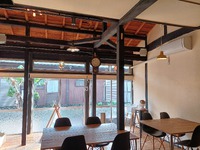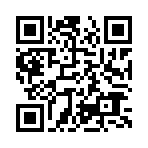2011年11月24日
My radiation tests.
I am not an expert on things nuclear. I am learning more and more, but it is a subject I did not want to have to study.
Well, I have been using a radiation tester around where I go in Amami for the past few weeks, and mostly the news is good. I mean that the levels of radiation do not seem to be very high.
I do not know what the background gamma-radiation count in Amami was before Fukushima went sky-high, but I discovered a count of 0.10 to 0.12uSv/h was a reading I would commonly get. This is kinda near the limit of how much radiation a person should expect to cope with if such a level of exposure is continued for a year.
I found I could expect a reading of up to 0.14uSv/h in places where dust had built-up.
Neither did I find any significant cause for alarm when I tested some things I found at the supermarket. The fish I checked was all right, as were the fruit and veggies. I found nothing which was more than a tiny bit over the background radiation here.
*
However I tested a few things and places these past few days and I have discovered quite a few places and items which are significantly over the background gamma-count.
I tested some potting soil and it measured 0.18uSv. That's 50% over the ambient. Is this too dangerous? I cannot say because I do not know. I can only assume the contamination is from caesium, and that it should be avoided.
I only tested one brand of potting soil - it was the cheapest I could find. Perhaps other brands are less radioactive?
I read some bought pastries (flour products) at 0.16uSv/h. Again, this is not so high, but it is certainly radioactive, and as the contaminant is likely to be caesium, it should be avoided especially by children and young women.
I tested rice as well. This was the cheapest rice in the shop. My machine recorded it was radioactive to the tune of 0.14uSv/h. - My thoughts on this are that the rice is a mix of radioactive rice and non-radioactive rice so that there would be some grains of rice which would certainly present a dire threat to the health of the person who ate it.
There's been a lot of rain recently. I wanted to see if the rain brought with it any extra radioactive contamination.
I tested the sides of the roads where the water collects and discovered the new elevated reading was 0.18uSv/h. This is a big jump from the 0.14uSv/h maximum I detected a week earlier.
The middle of the roads I tested were between 0.12 & 0.14uSv/h, which is fairly similar to what it was before, but the water near the outflow of my washing machine was 0.19 to 0.2uSv/h, so my clothes have been picking up radioactive particulates from the air and the rain.
* My kitchen table was the same as it's always been, and the tester indicated it was emitting gamma radiation at a strength of 0.10 to 0.11uSv/h. (I was happy to see that).
Bon apetit!
Well, I have been using a radiation tester around where I go in Amami for the past few weeks, and mostly the news is good. I mean that the levels of radiation do not seem to be very high.
I do not know what the background gamma-radiation count in Amami was before Fukushima went sky-high, but I discovered a count of 0.10 to 0.12uSv/h was a reading I would commonly get. This is kinda near the limit of how much radiation a person should expect to cope with if such a level of exposure is continued for a year.
I found I could expect a reading of up to 0.14uSv/h in places where dust had built-up.
Neither did I find any significant cause for alarm when I tested some things I found at the supermarket. The fish I checked was all right, as were the fruit and veggies. I found nothing which was more than a tiny bit over the background radiation here.
*
However I tested a few things and places these past few days and I have discovered quite a few places and items which are significantly over the background gamma-count.
I tested some potting soil and it measured 0.18uSv. That's 50% over the ambient. Is this too dangerous? I cannot say because I do not know. I can only assume the contamination is from caesium, and that it should be avoided.
I only tested one brand of potting soil - it was the cheapest I could find. Perhaps other brands are less radioactive?
I read some bought pastries (flour products) at 0.16uSv/h. Again, this is not so high, but it is certainly radioactive, and as the contaminant is likely to be caesium, it should be avoided especially by children and young women.
I tested rice as well. This was the cheapest rice in the shop. My machine recorded it was radioactive to the tune of 0.14uSv/h. - My thoughts on this are that the rice is a mix of radioactive rice and non-radioactive rice so that there would be some grains of rice which would certainly present a dire threat to the health of the person who ate it.
There's been a lot of rain recently. I wanted to see if the rain brought with it any extra radioactive contamination.
I tested the sides of the roads where the water collects and discovered the new elevated reading was 0.18uSv/h. This is a big jump from the 0.14uSv/h maximum I detected a week earlier.
The middle of the roads I tested were between 0.12 & 0.14uSv/h, which is fairly similar to what it was before, but the water near the outflow of my washing machine was 0.19 to 0.2uSv/h, so my clothes have been picking up radioactive particulates from the air and the rain.
* My kitchen table was the same as it's always been, and the tester indicated it was emitting gamma radiation at a strength of 0.10 to 0.11uSv/h. (I was happy to see that).
Bon apetit!




